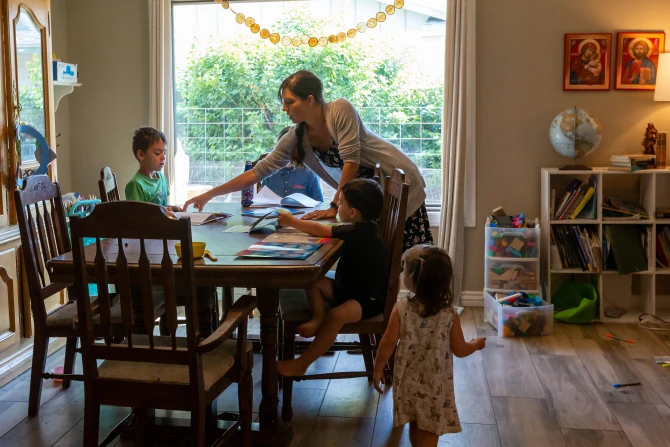Home schooling continues to grow even as the pandemic is no longer a contributing factor, according to a September study that found multiple states reaching all-time-high numbers of home-schooled students.
The Johns Hopkins School of Education’s Homeschool Research Lab in its 2023-2024 report on home school growth found that 90 percent of states that shared numbers with the institute reported that home schooling had increased since the previous school year.
The report, published in September, found that while the total number of students is declining nationwide in part due to declining birth rates, the number of home-schooling students is increasing.
The increase can no longer be attributed to the pandemic, according to researcher Angela Watson.
“While home schooling grew rapidly during the pandemic, most people thought that students would return to more traditional schools when the pandemic disruptions abated,” Watson wrote.
“Some states did show a decline, but few have returned to normal, even four years after the onset of the pandemic,” she said. “What we see with the most recent increases in state-reported home school participation is something new — these numbers are not driven by the pandemic.”
Several states reported record-high numbers of home-schoolers in the 2023-2024 school year. North Dakota had a 24 percent increase in home-schooled students from the prior year, while Rhode Island reported a 67 percent increase and Wyoming had an 8 percent increase.
Louisiana, South Carolina, and South Dakota have had continued growth since the start of the COVID-19 crisis. Home schooling has grown without interruption in these three states with no “post-pandemic decline.”
Sixteen states had a “rebounding trend,” according to the report. This means that after the pandemic was over, the number of home-schoolers decreased before experiencing a renewed surge in home schooling numbers.
Only two states in the study — New Hampshire and Vermont — reported a decline in the number of home-schooled students in 2023-2024, which in New Hampshire could be attributed to changing methods of categorizing home-schooled students.
New Hampshire’s state Education Freedom Account (EFA) allows home-schooled students to receive public funding, but students receiving this public funding are not considered part of the total home schooling number, the report noted.
The program launched in 2021, with the state subsequently reporting a lower number of home-school students than its pre-pandemic count.
Home schooling models may include microschools, hybrid schools, and home schooling cooperatives, according to the report. Twenty-one states responded to the study and the group is set to publish more data in the coming months, though only 30 states record home schooling participation.
Last October, the Washington Post called home schooling the “fastest-growing form of education” in the United States, with double-digit increases in home school enrollment seen in a majority of U.S. states over roughly the past five years.
“While there is a clear growth trend in home schooling, the reason for that growth is unknown,” Watson noted in a Catholic News Agency report.
“What is clear is that this time, the growth is not driven by a global pandemic or sudden disruptions to traditional schooling. Something else is driving this growth.”













